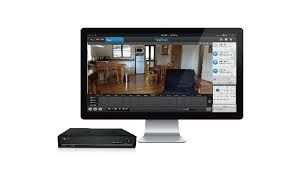IP PTZ Cameras Explained
IP PTZ Cameras Explained:
Let talk about IP PTZ Cameras:
IP PTZ cameras, combining the functionality of PTZ cameras with the advantages of IP technology, offer a powerful solution for comprehensive and versatile security monitoring. Let get a deeper dive into their key features and benefits:.
PTZ Functionality:
Pan-Tilt-Zoom: Provides a wider field of view with the ability to rotate horizontally (pan), tilt vertically, and zoom in and out for focused observation.
Remote Control: Control the camera movement remotely through a joystick, keyboard, mouse, or mobile app, allowing you to adjust the view as needed.
Presets: Program the camera to automatically move to predefined positions for quick monitoring of critical areas.
Automatic Tracking (optional): Advanced models can track moving objects within the scene, ensuring they remain in focus for better monitoring.
IP Camera Advantages:
High-Resolution Video: Capture high-definition (HD) or even 4K resolution video footage, providing sharp and clear images for accurate identification.
Remote Access: View live and recorded footage from anywhere with an internet connection through a web browser or mobile app.
Scalability: Easily expand your security system by adding more IP cameras to your network.
Digital Recording: Works with Network Video Recorders (NVRs) for digital storage with greater flexibility, search capabilities, and easier backups compared to analog systems.
Benefits of IP PTZ Cameras:
Enhanced Situational Awareness: Monitor large areas and zoom in for detailed views of specific points of interest, all from a single camera.
Improved Response Time: Quickly react to security incidents by directing the camera to the area of concern.
Reduced Camera Count: Cover a larger area with fewer cameras compared to using only fixed cameras.
Remote Deterrence: The ability to move the camera remotely can deter potential intruders.
Integration: Integrate with other smart home devices or security systems for a more comprehensive solution (e.g., triggering lights or alarms).
Choosing an IP PTZ Camera:
When selecting an IP PTZ camera, consider these factors:
Field of View: How wide is the area you need to cover?
Zoom Capability: What level of zoom is necessary for clear identification (optical vs. digital zoom)?
Pan-Tilt Speed: How quickly does the camera need to move to track objects effectively?
Control Method: Choose the best control method that suits your needs (joystick, keyboard, mobile app or presets).
Night Vision: Consider the required night vision range and technology (standard IR vs. Starlight Night Vision).
Weatherproofing: Needed for outdoor use?
Audio Support (optional): Two-way audio for communication or one-way for audio detection.
Cybersecurity: Ensure the camera has strong encryption and receives regular firmware updates for security.
Additional Considerations:
Power over Ethernet (PoE): Simplifies installation by transmitting both data and power over a single cable.
Warranty: Choose a camera with a good warranty period.
Mobile App Compatibility: Ensure the camera has a user-friendly mobile app for remote access and control.
Examples of Applications:
Perimeter Security: Monitor fence lines, building entrances, or parking lots.
Traffic Monitoring: Track vehicle movement in parking lots, access roads, or public areas.
Critical Infrastructure: Monitor sensitive areas like power plants, data centers, or government facilities.
Retail Stores: Observe customer activity and deter shoplifting.
By carefully considering these factors and your specific security needs, IP PTZ cameras can be a valuable investment for a robust and versatile security monitoring system.




Comments
Post a Comment